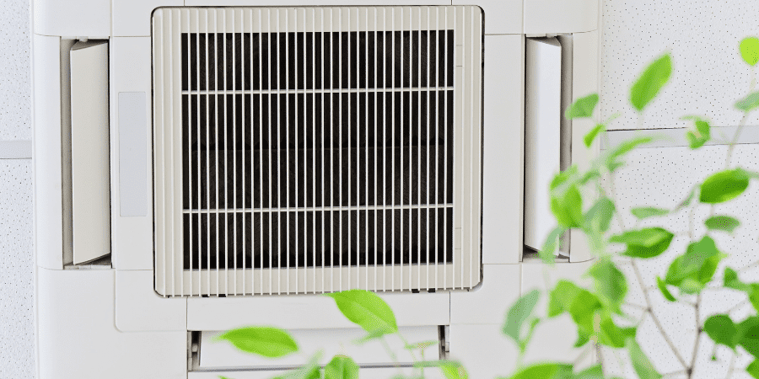3 Min Read
How to Control The Indoor Air Quality of Your Houston Home

When you think about designing and building a new custom home in Houston, your mind may be primarily focused on the architecture, innovative technologies, modern design styles and blending outdoor and indoor living spaces. However, if you want to build a home that's meant to last for years to come, there is another crucial yet often glossed-over component: indoor air quality.
You and your family spend hours inside your home every day. If the air you breathe is not fresh and clean, it can be detrimental to your health and wellbeing over the long run. For individuals who suffer preexisting health conditions or respiratory afflictions, the ramifications can be even more severe.
The problem is, trying to control your indoor air quality on a day-to-day basis is wildly ineffective. The best time to make this a priority is when you’re actually designing and constructing your new luxury house in Houston.
How Do You Ensure Good Air Quality Indoors?
Despite recent efforts aimed at improvement, Houston is notorious for its struggle with unhealthy air. This Texas metropolis consistently ranks among the nation’s most polluted cities, due in large part to heavy traffic and multiple chemical plants in the area. While there is little you can do about pollution in Houston, you have control over your home and how it is constructed. You have the ability to incorporate certain practices, materials and systems that contribute to your family’s long-term health, safety and comfort.
Here are some the most effective ways to control air quality and ensure your home supports your safety and wellness:
1. Proper Construction
In the 21st century, it's important your luxury custom home in Houston is built to withstand the environmental conditions of the surrounding area. Proper construction also prevents unhealthy Houston air from leaking into your house. A professional home builder will know what materials are potentially hazardous and should be avoided. Lead and asbestos are extreme examples that are now restricted by the U.S. Environmental Protection Agency (EPA). However, there are toxic chemicals—such as formaldehyde, chlorinated plastics, per-fluorinated compounds and antimicrobials—found in numerous conventional construction materials, from insulation and composite wood products to certain types of carpet, tiles and vinyl. If you want to prevent contaminants in your home, you should talk to your builder about prioritizing high-quality materials.
2. Sealing and Ventilation
Moving inside, it’s also essential that you seal the structure properly and install the right ventilation system. When moisture accumulates inside your home as a result of everyday activities, like cooking and showering, the indoor humidity level also rises. If you don’t have adequate air ventilation, humidity can contribute to the proliferation of mold, mites and bacteria. Additionally, adequate ventilation can protect you from concentrated exposure to common indoor pollutants, such as carbon monoxide (CO), volatile organic compounds (VOCs) and particulate matter 2.5 (really fine dust). Ensuring the proper exchange of indoor and outdoor air helps dilute or eliminate these pollutants.
Ventilation systems, such as those manufactured by Panasonic, Broan & Aprilaire, can help with fresh air intake in your Houston home. Expertly designed ventilation units can be controlled manually or you can make them automatic. Fresh air is introduced into the home duct system, heated or cooled by your furnace or air conditioner, and then circulated throughout the home. Thanks to smart technology, the units will not bring in outside air if it is too hot, cold or humid.
As for proper sealing, ZIP System Wall Sheathing is a good example of a modern approach to building residential enclosures. ZIP System sheathing and tape blends the weatherization process with an integrated air- and water-resistant barrier, delivering moisture and air quality protection in a single system.
3. Proper Filtration
Next, you can filter the air in your house to improve its quality. As you research different air filtration systems, it’s helpful to be acquainted with the Minimum Efficiency Reporting Value (MERV) rating system. Filtration systems with a higher rating remove a larger percentage and broader range of debris from the air inside your home.
For example, a system with a MERV 11 rating will trap dust, lint, pollen, dust mites, mold, pet dander, smoke, smog and airborne particles from coughs and sneezes while a MERV 6 means the system only filters out dust, lint and pollen. You should plan to install a system with at least a MERV 11 rating when constructing your luxury custom home. Also, change your old filter on a regular basis to keep your air fresh.
4. Air Purification Systems
Finally, consider adding an air purification system to your air filter during the home construction process. It will help clean the air as it passes through the ductwork in your house. Germicidal ultraviolet (UV) lights also can purify your indoor air by killing mold and bacteria before funneling clean air into your HVAC system for circulation. UV air cleaners emit a light that destroys the genetic makeup of contaminants. It can even kill germs, bacteria and viruses; mitigate the spread of airborne disease; and lower the risk of mold growth on critical components inside your HVAC system.
Building a Safe, Healthy Home in Houston
Superior indoor air quality isn’t a luxury. It’s an essential. The good news is there are several systems and construction practices our team at Southern Green Builders can incorporate during the custom home building process to create a healthier long-term living environment for you and your family. Our goal is to construct luxurious homes that are not only beautiful but also durable, comfortable and safe.


.png?width=352&name=Copy%20of%20SGB%20Featured%20Images%20(1).png)

